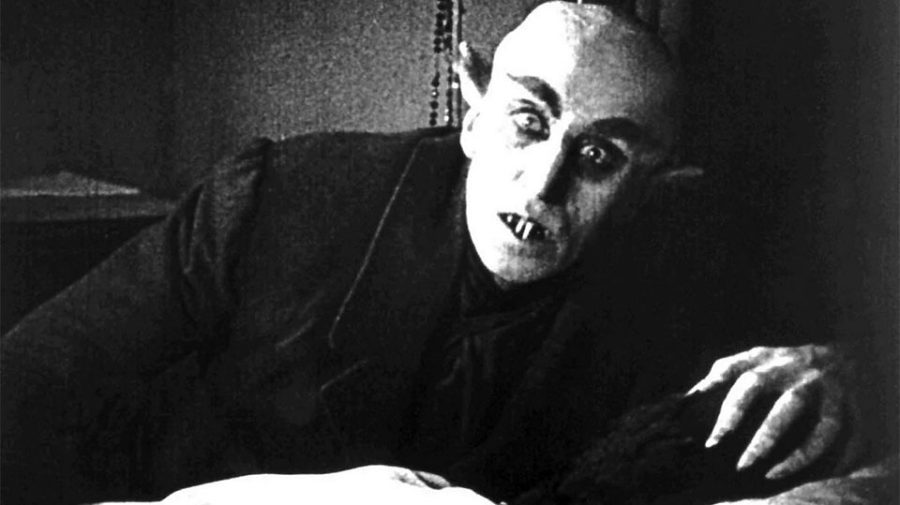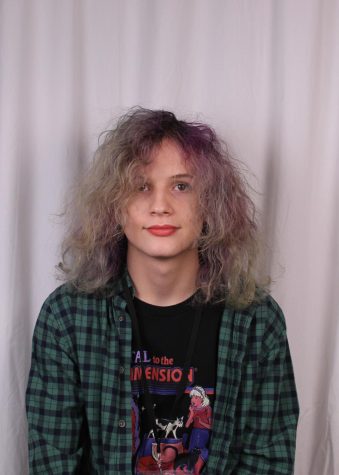Foreign Horror VS U.S Horror
While the horror industry in America and the world has its similarities, there are still some differences between the two.
In the season of Halloween, when ghoulish spirits are high, people around the globe are consuming horror media. Horror can be portrayed through movies, books, and even myths, yet there may be some integral differences between horror in the United States and other countries. Born and raised in France, Aquatic and AP Environmental Science teacher Marie Lamkin first thought negatively of the holiday of Halloween when she moved to the United States.
“When I first came to the United States, I thought Halloween was very disrespectful to the dead because it was very different from what I grew up with. On November 1st, in France, it is ‘All Saints Day,’–a day to remember the dead. People celebrate the dead by going to the cemetery and bringing flowers. In a way, it is similar to ‘Day of the Dead,’” said Lamkin.
‘Day of the Dead’, a Mexican holiday which entails the memorial of passed loved ones through celebration, acts as a colorful day of remembrance of November 1st. Festivals are held, food is plentiful, and graveyards are cleaned. It is held as one of Mexico and Latin America’s most celebrated holidays. Spanish Teacher, Ivonne Want expands on Mexico’s view of horror and the culture itself.
“I was born and raised in Mexico. We do not have Halloween in Mexico, but we do have ‘Los Muertos’ or ‘Day of the Dead’ which is a very different celebration. We see death very differently in the way that we do not fear it–rather we embrace it. Horror might be a little different to us because some see horror as a distraction within our culture, rather than anything to be scared by. I think the difference between the United States and Mexico’s horror has a lot to do with culture, with how you were raised and how you grew up. In America, you might grow up with parents that tell you ‘when you don’t go to bed, monsters hiding in your closet will get you. Kids in Mexico do not have that. There are scary stories that everybody knows like La Llarona, or the crying lady, which is about a lady in Mexico City that murders her children and roams the city crying for them. To them, it sounds as scary as monsters hiding underneath the bed,” stated Want.
Other countries like the Philippines have a long relationship with horror. Junior, Rie Cabalo an immigrant from the Philippines, gives reason for the existence of horror within their country.
“So much colonization has happened in my country, our culture is basically covered up in all our past colonizers like the Spanish, Americans, and the Japanese. I first discovered a large part of my culture through ‘Trese,’ a Netflix series which covers different Filipino creatures that Filipino kids grew up hearing about through their parents and other provinces. One of the most notable creatures featured was the ‘Mannanggal’ a giant bat-like vampire that has a desire to target pregnant women who were close to giving birth.

Through the show, I found parts of my culture that I was missing. The reason why these creatures may still be alive in my culture today is because we have gotten used to other people taking our land. So we wanted to protect our country’s culture through the horror media. Without it, I wouldn’t know those parts of my culture today. When it comes to Filipino horror, there is so much more to tell because there is so much land; despite it being just an island surrounded by beautiful green waters. Our horror is different. It is not just about people that died in a certain place, nor is it about repetitive ideas, each story has so much significance in our culture,” said Cabalo.
In American Culture, writers like Stephen King, Edgar Allen Poe, and Anne Rice are known for utilizing horror within their books and stories. Leon Finn believes that literature involving horror can be just as scary to view the horror through text, rather than images.
“I think it’s even scarier to sit down and read something with all the details written out for you. Reading horror related literature leaves room to envision the story in your head, without it already being set out in front of you. ‘Like what if this happened, or if the killer looked like that.’ Reading horror is a lot of what ifs, and that is something I love,” stated Finn.
Creative Writing and English 4 teacher, George Olsen finds horror to be much more appealing through foreign literature, as he appreciates the artistry displayed within it.
“I like reading horror much more than I like watching it. I have a real problem with graphic images because that’s the kind of person I am. I tend to not watch horror movies so I do not have any bad dreams or nightmares. I believe my thinking is a lot more positive simply because I don’t let myself be exposed to images that would negatively recur in my head. However, when I read horror, I can compartmentalize it differently just because I keep it more as an academic exercise rather than an emotional one. With words I seem to be able to interpret them any way I want. The best stories for me have been classics that go back in time. Most of those stories that I like so much are from different countries. Although there are great horror artists in America, the writing seems more formulaic.Classical European horror stories are classier and more artistic,” said Olsen.
The horror movie industry in America has been around since the release of Mary Shelley’s Frankenstein in 1910. Since then, many movies have come out both in America and in other regions of the world. Olsen interprets the modern movie industry in America as faulted in their own greed.
“I think especially when it comes to movie making, horror as a genre is done differently. It follows the same pattern as musicals did in the 80s and 90s, in that, horror was a genre that really relied on suspense and characterization. When we look at cinematic images coming out of Europe it seems more like an art form. In American cinematography, you end up with everything blown up graphically, so much so that it impacts without passion. American movie companies abuse tropes as an avenue to make money, as opposed to making art. I don’t fault anybody, I just think being in a capitalist society has taken away art form in horror, at least in America,” stated Olsen.
Junior, Madelynne Wilson distinguishes the view and effect that American horror leaves, in comparison to foreign horror.
“I feel like the perspective on horror is mixed. Some of America views horror as stuff for the devil, designed to put bad ideas into kids. While others seek out horror for entertainment. In my opinion, general U.S horror is a bit more tame than foreign Horror, it can be much more commercialized rather than genuine creepiness. Like with slasher films like Halloween and Scream, when they start to lose their touch, movie companies revive the series for younger audiences who might not know what the series is. With foreign horror, once you finish a series, it leaves a bit more creepiness and thought behind. I don’t like how instead of using horror for scaring people, they use it for making money. It makes the movie feel like a void of life and merely a piggy bank,” said Wilson.
Sophomore, Scotty Galarza explains the financial difference between the foreign and American media, and why it may be worthwhile to consume foreign horror.
“Foreign movies compared to the United States have smaller budgets from what I have seen. They also are usually from movie companies not associated with big time businesses like Netflix. Usually they do not begin nor become as popular as American horror movies. If you want to support other countries and smaller artists, then I think you should try watching foreign horror movies,” stated Galarza.
Senior, Grey James, an avid watcher of horror, prefers Foreign horror because it does not have the same repetition that exists within many American horror movies.
“Horror hasn’t really changed much over the years–at least in America. Tropes reoccur so much and take away from the scare of the movie. Personally I think tropes like jumpscares are overused, horror that builds up overtime into something creepy and indescribable is much better. The suspense and buildup makes horror interesting to me. American movies are filled with a lot of jumpscares and are just boring. It just seems too predictable. Foreign horror is much more unique than America’s because there is just so much to it,” said James.
Subtitles can play an integral role in movies, as they allow audiences to consume media that they might be able to otherwise. However, when it comes to horror movies, it may take away from the fear factor of the movie.
“When you are focusing on reading, you’re not really seeing all of the image and what is going to make you jump. I think some horror movies would be better dubbed instead of subtitles because you’re able to fully enjoy what is happening on the screen, rather than focusing on the bottom of the screen–trying to comprehend everything that is going on. Translation is not always exactly accurate, sometimes if it is a good translator who understands the language, then it will be great. Occasionally, they will change what is said in a movie just to make it ‘scarier’ or ‘more understandable to other audiences,’” stated Want.
Horror exists everywhere, whether it be through fictional myths, intrusive art pieces, or cinematic masterpieces, people can form their own opinions on horror from its accessibility around the globe.
“Regardless if you’re from the U.S or not, everyone knows Horror movies–no matter where you are. Horror movies will be widely accessible. They are translated to every language. The movies are designed to scare people, and to give people the adrenaline rush from the feeling of ‘somebody’s going to get you.’ I do think that foreign horror and American horror have changed the perspective surrounding horror because of its accessibility,” said Want.


